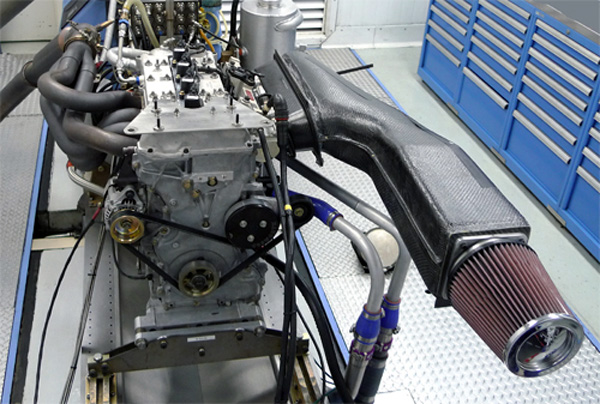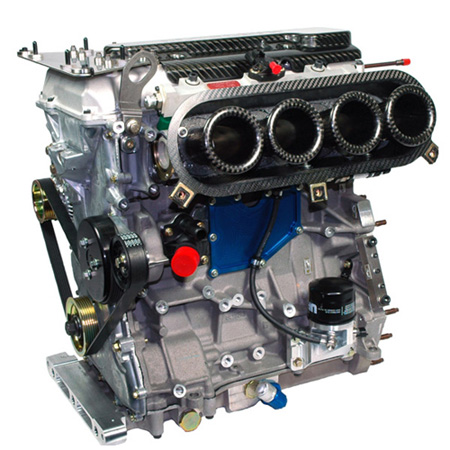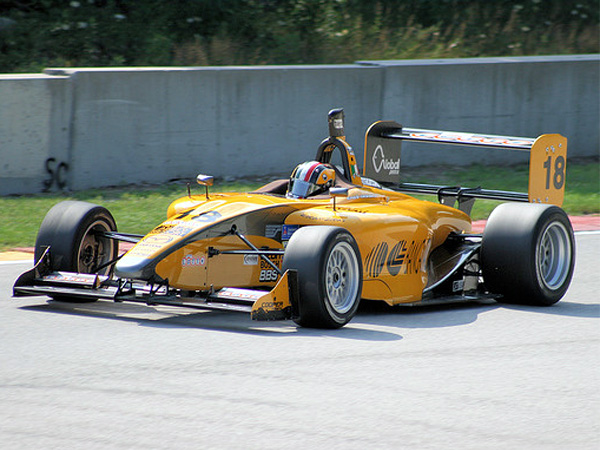
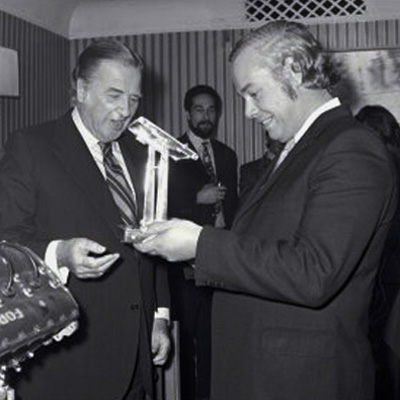
Cosworth Engines
[ Vol.1 | Vol.2 | Vol.3 | Vol.4 | Vol.5 ]
[ Vol.1 - Modified OHV | SCA | FVA | BDA ]
[ Vol.2 - DFV | DFV in Japan ]
[ Vol.3 - Fomula 1 | Indy/Champ car ]
[ Vol.4 - inline 4 ]
[ Vol.5 - Others ]
| Inline 4 lineage |
| Type | Year | Size | Output | Description |
|---|---|---|---|---|
| EAA | 1972 | 1995cc | 275 Bhp. | Chevolet Vega, Formula 2 and Sports Cars, only successful in latter, used Vega alloy block, head similar to BD series, belt drive, productionized and built by Chevy in 122 BHP for for Cosworth Vega of the 70s |
| KAA | 1978 | 2410cc | 240-275 Bhp. | Opel Ascona 400/Manta 400, used Opel Diesel block, 16 valve twincam for Group 4, injected for road at 140 Bhp, Webers for competition |
| OAA | 1979 | 1600cc | 170 Bhp. | Formula SuperVee engine, based on single overhead cam Golf |
| WAA | 1984 | 2297cc | 187 Bhp. | Mercedes-Benz, twincam conversion on M102 4 cylinder, originally for competition, then for road use in 190E 2.3-16 |
| WAB | 1988 | 2498cc | 195 Bhp. | Mercedes, increased displacement for '89 model year |
| WAC | 1989 | 2490cc | 330 Bhp. | Mercedes, Group A short stroke '89 touring car racing |
| DBA | 1987 | 3000cc | 370 Bhp. | GM-Pontiac, Cosworth 4 valve twincam head on production block, chain drive cams, kits |
| KBA | 1987 | 1998cc | 156 Bhp. | Vauxhall-Opel, 16 valve twincam conversion of midrange engine, fitted to many models |
1972: EAA for 75-76 Chevrolet Cosworth Vega
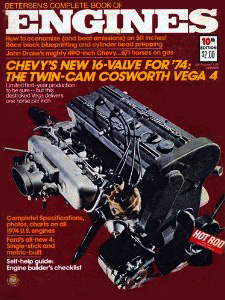

Cosworth Vega 122 cu in DOHC L4-110 hpIn the USA, the name has also appeared in the title of a road car (well before it did in Europe) as the Cosworth version of the Chevrolet Vega.
Only 3,508 1975 and 1976 Cosworth Vegas were produced from March 1975 through 1976.
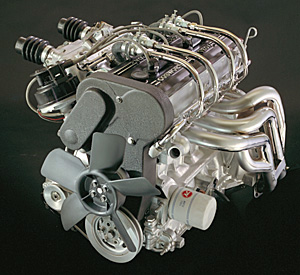
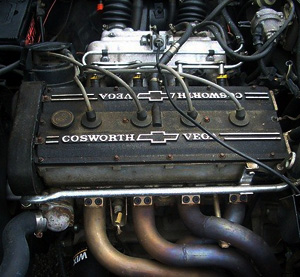
The engine features the Vega sleeveless, aluminium-alloy block fitted with forged components. The twin-cam, 16-valve, aluminium cylinder head design was assisted by Cosworth, but Chevrolet did the development work. The engine features electronic ignition, Bendix electronic fuel injection, and stainless steel headers. The final US emissions standardised version produces 110 bhp.
Cosworth's EA racing version was not successful due to engine block structural failures. Chevrolet later produced a heavy-duty 'off-road' block with thicker walls to better withstand the racing application, but by that time Cosworth had moved on.
Projected first year sales of the Cosworth Vega had been 5,000. With only 3,508 cars produced and many unsold, the car was discontinued. 1,500 hand-built Cosworth Vega engines were simply scrapped for lack of demand.
1978: KAA - Opel Ascona 400/Manta 400
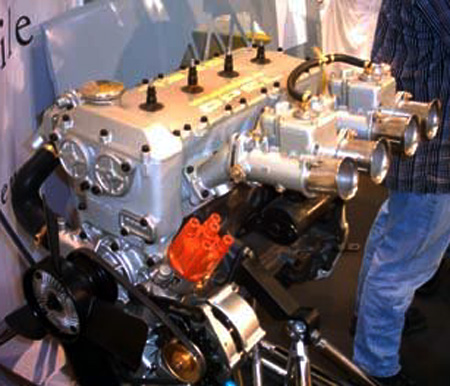
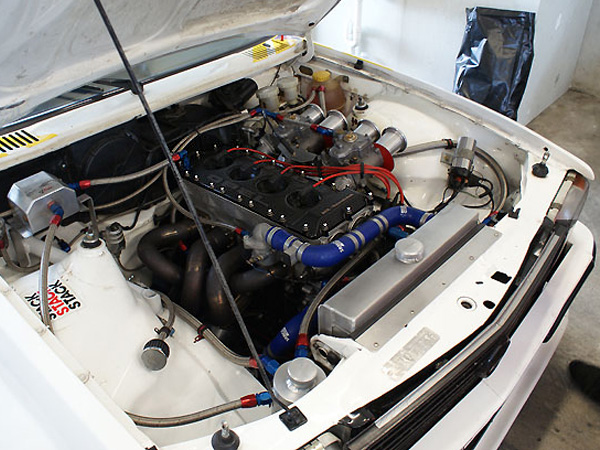
Other published projects for Adam Opel AG include the Opel Ascona 400 / Manta 400 rally cars and the 2.0L 16V engines in the Opel Kadett, Opel Astra GSi, Opel Vectra and Opel Calibra turbo.
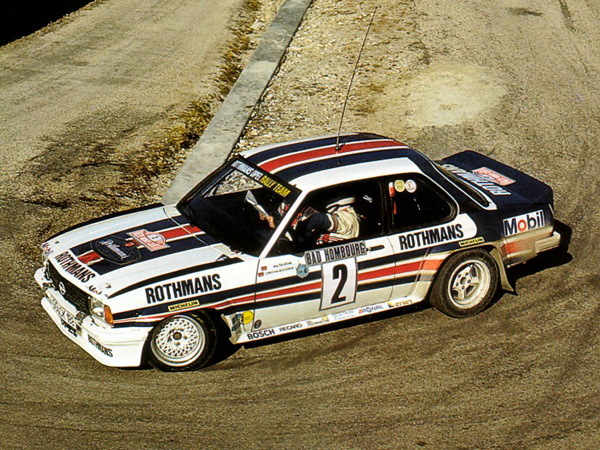
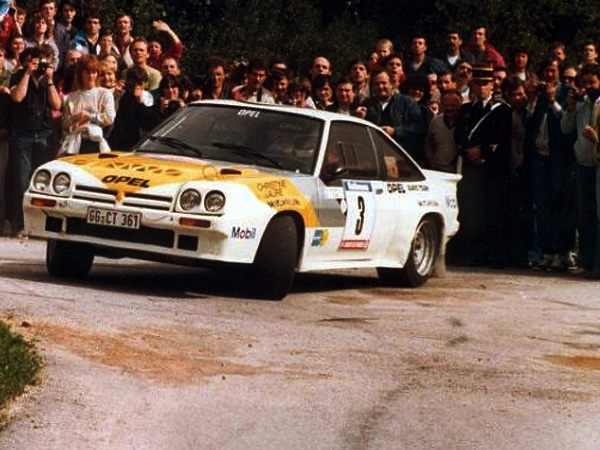
1979: OAA for Formula SuperVee
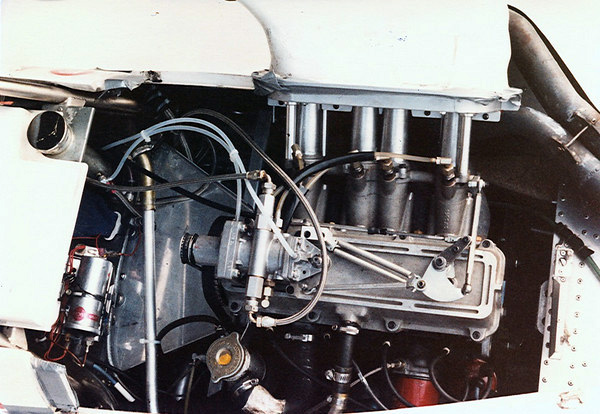
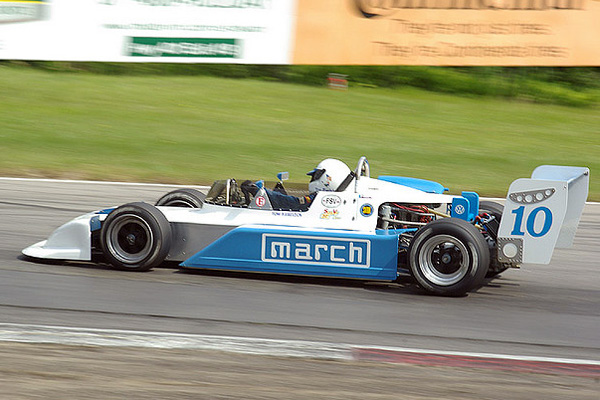
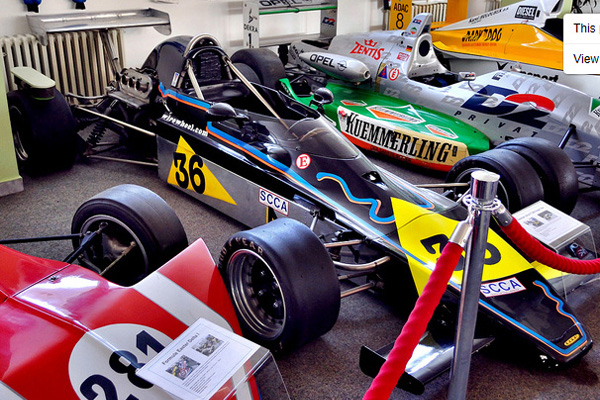
1078 Lola T-328 for formula supervee
1984: WAA - Mercedes-Benz 190 E 2.3-16
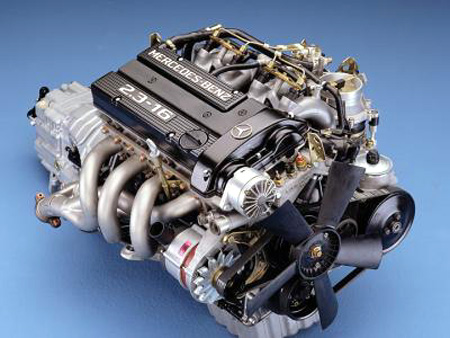
Cosworth’s involvement with Mercedes-Benz came with moves in the mid-1980s from the German manufacturer to re-enter motorsport after retiring from direct factory participation after the tragic 1955 Le Mans crash which killed 80 spectators.
Mercedes-Benz was looking to create a Group B rally car out of its new W201 Chassis (190E Model) and turned to the expertise of Cosworth to shorten the development time for this project.
The request was a huge surprise for Cosworth, and the original brief for a 320 bhp engine based on the 136 bhp Mercedes M102 2.3-litre SOHC 4-cylinder engine was passed duly passed to Mike Hall, who “drew the famed DFV and BDA engine”.
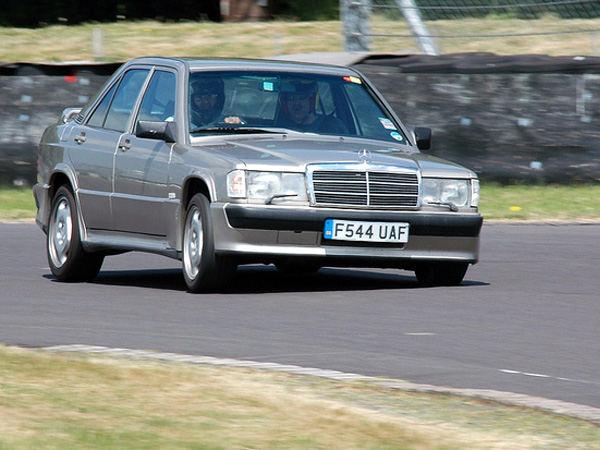
1986-88 190E 2.3-16
Designed around the existing M102 head bolt pattern, the new twin cam, 16-valve, pentroof head, had its valves set a 45° included angle, rather than the 40° angle of the BDA. The valves were the biggest that could be fitted into the combustion chamber. Flat top pistons delivered the 10.5:1 compression ratio.
The new Cosworth WAA engine also was Cosworth’s first one-piece head, i.e. the camshaft carrier was cast integral with the head itself. Again the constraints of the existing head-bolt pattern meant that Hall had to shift the camshaft bearings from outside each pair of camlobes as in the BDA to in between each cylinder's pair of cam lobes. The upside being that this configuration made for less flex at high rpm.
The advent of the AWD turbo Audi Quattro gave the rear-wheel-drive, normally aspirated 190E rally car no chance of being successful and the competition car was stillborn.
Instead Mercedes Benz decided to recoup its development cost by selling the car as a road going sports-sedan. Hall detuned the WAA race engine to 185 bhp by reducing the port diameters and a more restrictive fuel injection and induction was substituted for the race items to complete the detune.
All WAA 2.3-16 engines were built in the Cosworth factory with the heads being produced by the Coscast method.
1988: WAB - Mercedes-Benz 190 E 2.5-16
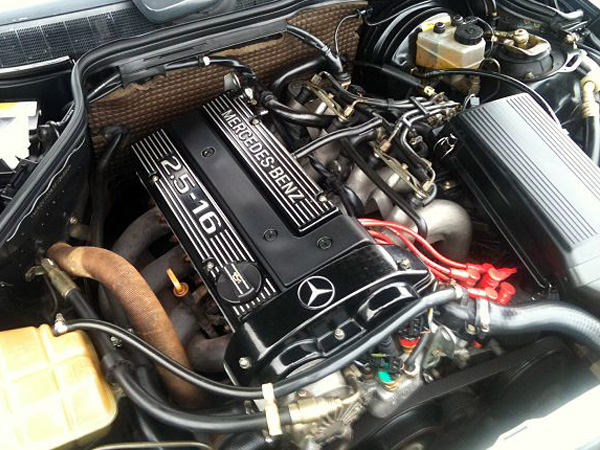
Cosworth assisted with the later 2.5-16 engine (WAB), and the short-stroke 2.5-16 Evo engines (WAC) although these were all manufactured in house by Mercedes-Benz.
1989: WAC - Short-stroke for DTM
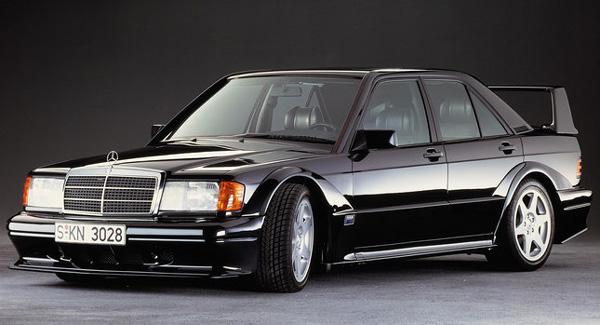
1990 190E2.5-16 Evo.II
The 190E 2.3-16 became the basis for privateer Mercedes entries into the DTM from 1988. The short-stroke 2.5-16 190E EVO II was race-developed to 375+ bhp, gaining the 1992 DTM crown with Klaus Ludwig at the wheel.
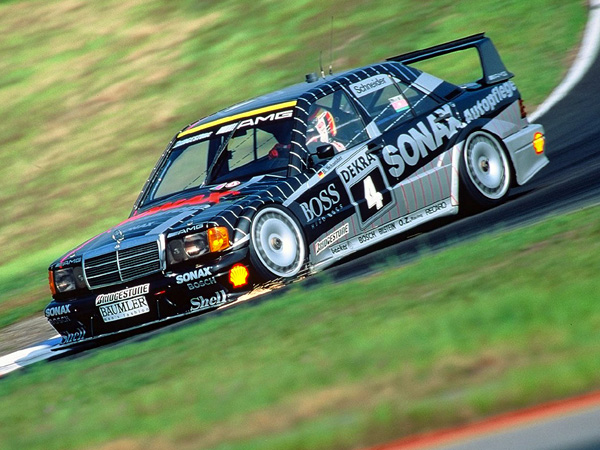
1987-96: YB series
| Type | Year | Size | Output | Description |
|---|---|---|---|---|
| YAA | 1984 | 1993cc | ? | In-house project, 16 vaslve, twin cam belt drive on Pinto block for small manufacturers, 3 built |
| YBA | 1984 | 1993cc | 200 Bhp. | Prototype YBB, 10 built |
| YBB | 1985 | 1993cc | 204 Bhp. | Turbo YAA commissioned by Ford for Sierra RS Cosworth, 5000 built for homologation |
| YBC | 1986 | 1993cc | 280-300Bhp. | Group A rally engine |
| YBD | 1987 | 1993cc | 225 Bhp. | Evolution YBB used in Sierra RS500, more turbo, 8 injectors, 500 Bhp in race tune |
| YBE | 1987 | 1993cc | -- | Ford Undustrial Customer Engine, non-Cosworth covers, used in Panther Solo |
| YBF | 1987 | 1993cc | 400+ Bhp. | Race version of YBD |
| YBG | 1989 | 1993cc | 207 Bhp. | U.S. emmissions capable model |
| YBH | 1989 | -- | -- | not yet disclosed |
| YBJ | 1989 | 1993cc | 207 Bhp. | Similar to YBG, emmissions engine |
| YBM | -- | -- | -- | -- |
| YBT | 1992 | 1993cc | -- | Big turbo, featuring a Garrett T34 and four wheel drive |
| YBP | 1994-96 | 1993cc | -- | Small turbo, featuring a Garrett T25, four wheel drive, Ford EEC IV management, with wasted spark ignition, twin coils, a different series of injectors. |
In 1990s as well as 80's, Cosworth continued to provide winning power, with the Ford Sierra Cosworth RS500 taking the 1987 Touring Car world title.
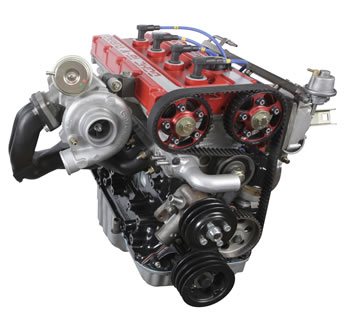
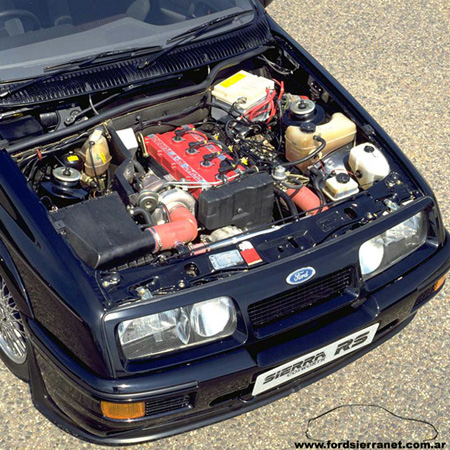
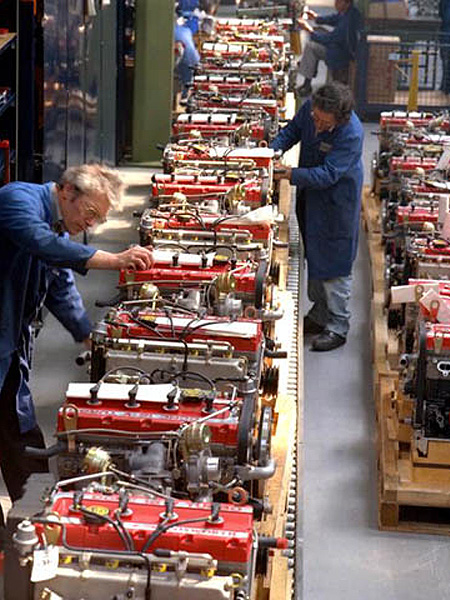
The YB series of 1,993 cc engines are based on the older Pinto engine block, and were introduced in the road-going Ford Sierra RS Cosworth in 1986 with 204 metric horsepower (150 kW; 201 bhp).
With 5,000 units built for homologation purposes in Group A, both for rallies and touring cars. Racing versions could develop about 400 horsepower (298 kW; 406 PS). A limited edition evolution model was introduced in 1987, the RS500, with power now exceeding 550 horsepower (410 kW; 558 PS) in full racing trim.
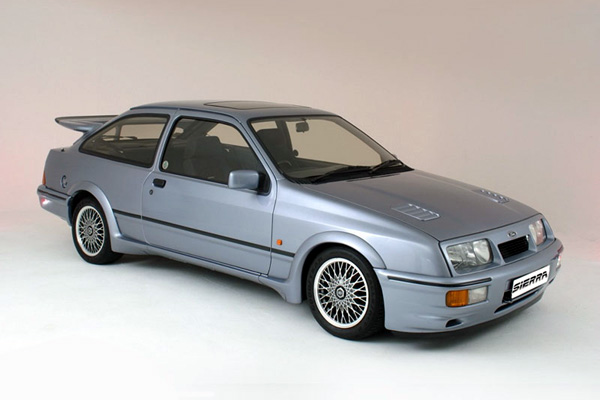
1987 Ford Sierra RS500 Cosworth
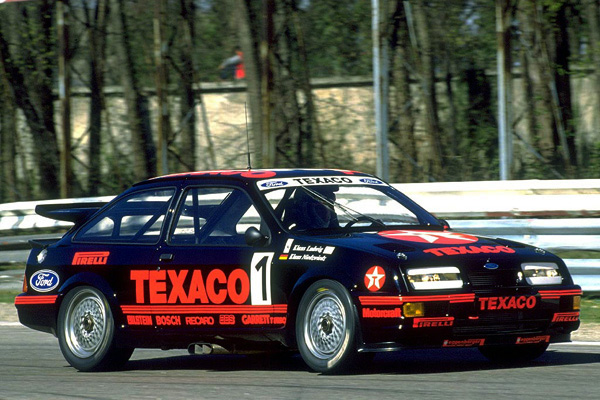
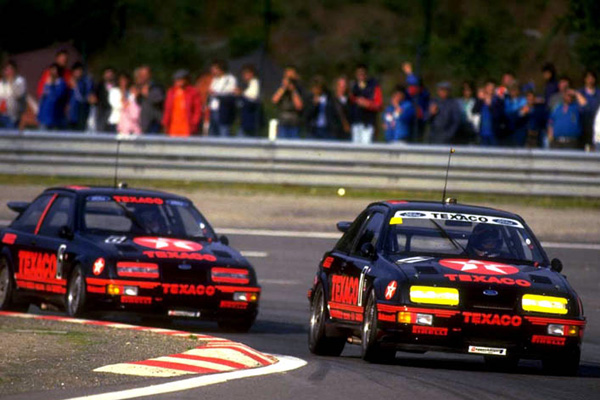
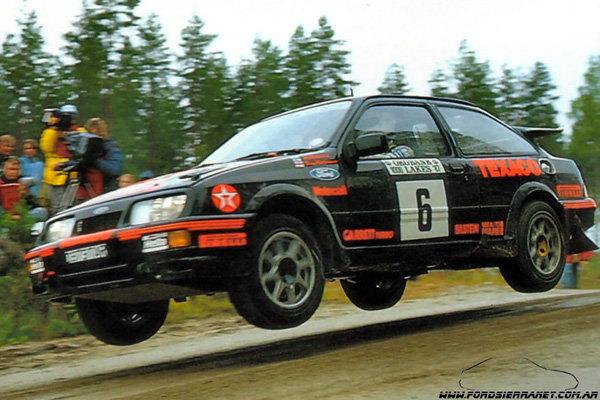
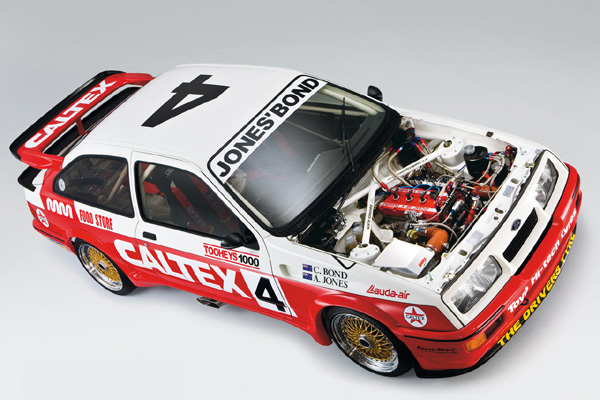
YBB / YBD / YBJ / YBG / YBT / YBP
The RS500 came to dominate touring car racing in its heyday. The various colour cam covers that distinguised each version were as follows: Red: YBB (Sierra Cosworth 2wd both 3-door and Sapphire), YBD (Sierra RS500), YBJ (Sierra Sapphire 4wd, non cat); Green: YBG (Catalyst equipped 4x4 Sierra Sapphire Cosworth); Blue: YBT (Large turbo Escort Cosworth); Silver: YBP (Small turbo Escort Cosworth).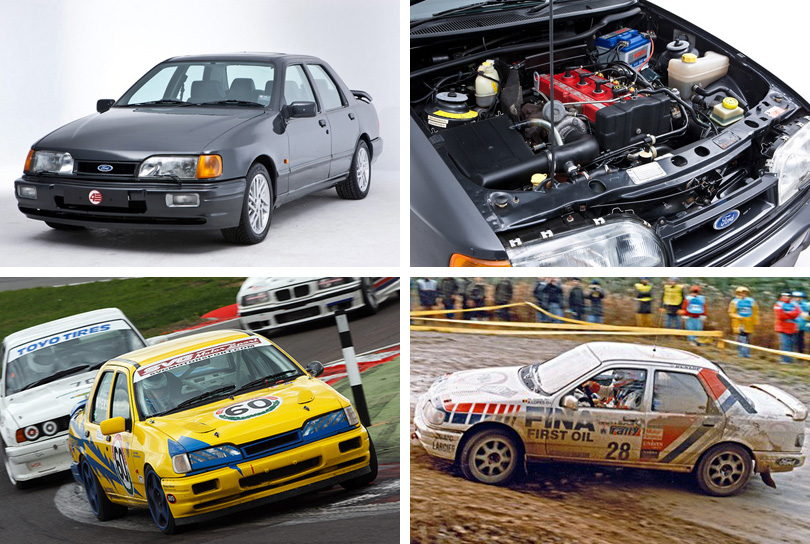
FORD Sierra Sapphire(4Dr.) RS Cosworth & RS Cosworth 4X4
A later version of the YB engine was used in the Escort RS Cosworth.
4代目エスコートに4WD仕様はなかったものの、シエラ・サファイアRSコスワース4×4の4WDコンポーネンツを、小さなエスコートのボディに収納。小さなエンジンベイに縦置きに搭載されたコスワースYBTエンジンはギャレット製大径ターボとの組み合わせによって、最高出力227馬力、最大トルク30.4kgmを発生。1992年にヨーロッパで発売され、1995年いっぱいで生産を終了した。
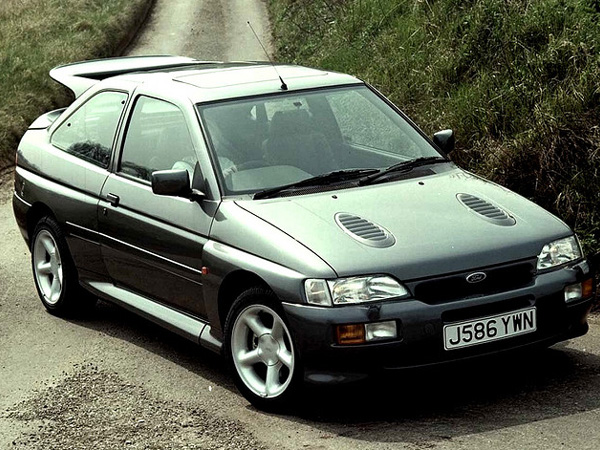
1992 Ford Escort RS Cosworth
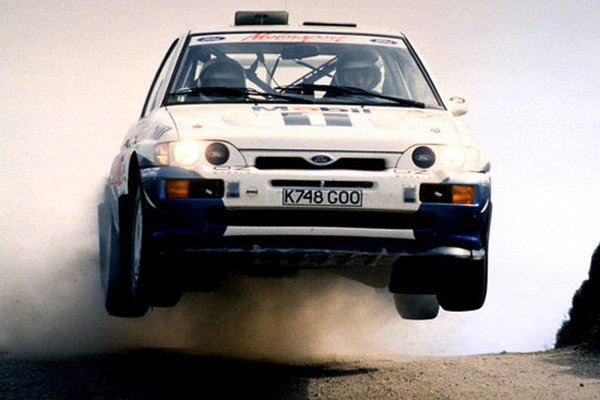
1993 Ford Escort RS WRC
The engine stopped being used on new cars in 1997, with the Focus WRC and road-going Focus RS relying on Zetec designs.
FIAが、1997年から、WRCのベース車両を、これまでの年間2,500台生産モデルから年間2万5,000台生産されている量産車に変更を発表した後、フォードは本来は認められていないフォード・エスコート・RSコスワースをベースにしたワールドラリーカーの製作許可をFIAに打診。FIAは2年以内に新規のワールドラリーカー開発、投入することを条件として特別に許可した。
開発は、英フォードのフォード・モータースポーツ(通称:ボアハム)で1996年に始められ、後に、ワークスチーム運営を元ワークステストドライバーのイギリス人、マルコム・ウィルソンが率いるMスポーツに引き継がれた。フォードのワークス活動がMスポーツが主導となると、そのチューニングにはコスワースとは別のチューナーが選ばれるようになった。
エンジンは、1987年のシエラ・コスワースよりWRCで使われてきたコスワースYBTユニットを縦置きに搭載。主な変更点は、ピークパワー重視のこれまでのギャレット・エアリサーチ製のT03/04型大径ターボから、より低中速域でのレスポンスとトルクアップを狙い、IHI製の小径ボールベアリングターボチャージャーに変更されている。
最大出力300馬力、最大トルク50キロ近くまで発揮したが、1997年シーズンが始まると、イギリスのマウンチューン社が手がけたエンジンはライバルに対してパワー不足が露呈。打開策としてTTEでセリカ用のターボエンジン開発で実績のあるノベルト・クライヤーにチューニングを委託した。しかし、パワーは出たものの、テスト半日でエンジンブローしたため、やむなくMスポーツは再びマウンチューン社のエンジンで1997年シーズンを戦った。翌1998年は、トム・ウォーキンショー率いるTWRがエンジンチューンを担当している。
YBE on Panther Solo 2
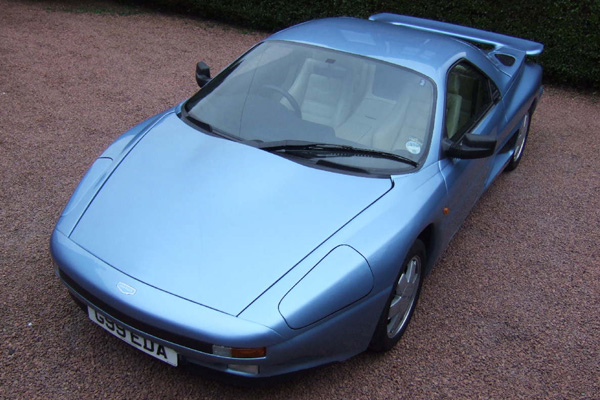
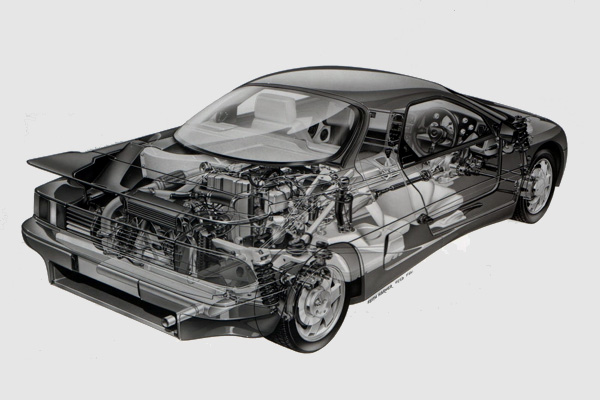
1989-90: Panther Solo 2
The Solo 2 used the Ford Sierra RS 1,993 cc engine. It was mated to the Borg-Warner T-5 (same as in the RS), which drove a Ferguson four-wheel drive system modified by Panther to use XR4x4 components, including both differentials.
A troublesome area was with the 4 wheel drive transfer box. This was a custom made part, the internals were chain driven and the chains had a habit of self destructing when abused.
It is not known exactly how many vehicles were built (however it was between 12 and 25).
1987: DBA - Pontiac SD4 (Super Duty 4) 16V for IMSA Camel Lights
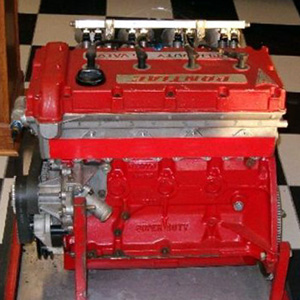
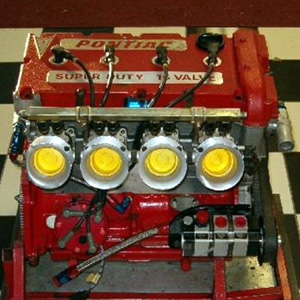
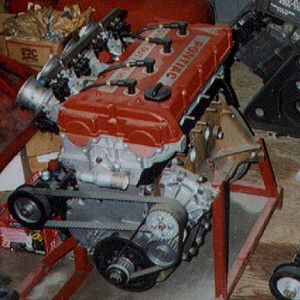
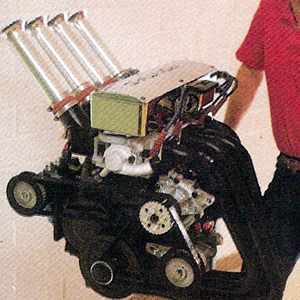
Original Pontiac Super duty 4
The Pontiac Super duty was originally developed as a three cam bearing high performance iron racing block for the 84 Fiero racing program. A later iron block was offered with five cam roller bearings. There were a series of iron and aluminum heads and finally an aluminum block and head combination was offered (used by midget racers with some success).
As originally designed the Super Duty was 2.5L (151 CI). It was built in many displacements up to 3.3L. For exmaple a 3.3L 16 valve super duty engine was dynoed at 424HP. The 16V head kit was at one time available from Cosworth for around $5K.
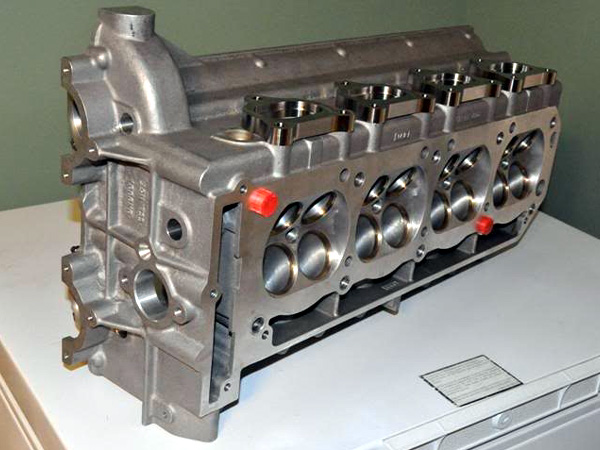
The 16V (chain drive) head was developed by Cosworth of California for Pontiac and raced with little success in 1987 and 1988 (IMSA GTP Spice Entech/Dole Fiero).
1987: KBA Vauxhall-Opel 16V
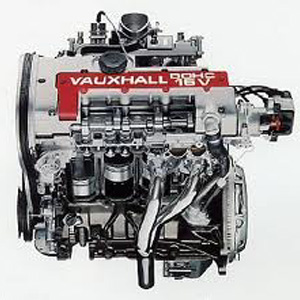
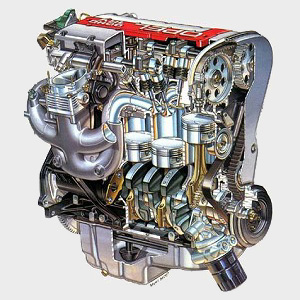
オペル(英:ヴォクソール)が、直4・2.0L・SOHC・8バルブ、115PSのC20NEエンジンをベースにコスワースにDOHC・16バルブヘッドの開発を依頼。出来上がったエンジンは、コスワースではKBA、オペル ヴォクソールではC20XE と名付けられる。C20XEは150PSを発揮し、Astra, Kaddet, Vectra, Cavalierに搭載された。
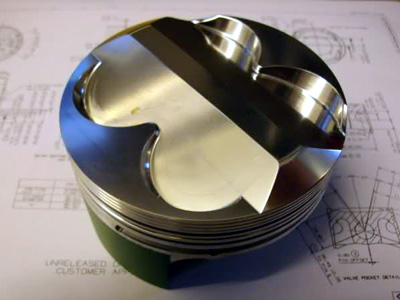
C20XE's racing piston
About COSCAST
Cylinder head casting and complete head assembly by Cosworth at Worester/Welling- borough at first.The C20XE engine's heads came in two notable forms. The original versions which appeared between 1988 and 1991 were cast by Cosworth. These are usually more sought after, due to their superior casting qualities, over the GM version which was introduced some time in 1991 (appearing with the Astra GSi).
One of the alleged qualities of the 'COSCAST' head is its inherent resistance to porosity; this was achieved by eliminating the presence of tiny air bubbles during the casting process.
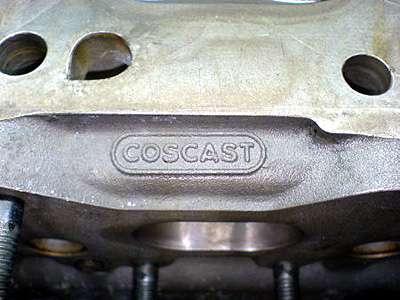
The Coscast head can be identified by a 'Coscast' logo which is stamped under the 3rd exhaust port.
Motorsport
The C20XE has seen extensive use in motorsport. Typical uses for the engine have ranged from hillclimb events, to open wheel racing categories. Despite its age, it remains the powerplant of choice for many Formula 3 teams and has most recently found acclaim in the Australian F3 scene where Tim Macrow, the 2007 Australian F3 champion, drove an Opel-Spiess powered car to claim victory. Tuned by Spiess, an F3 grade C20XE is easily capable of producing 250 bhp (190 kW) in its naturally aspirated form.
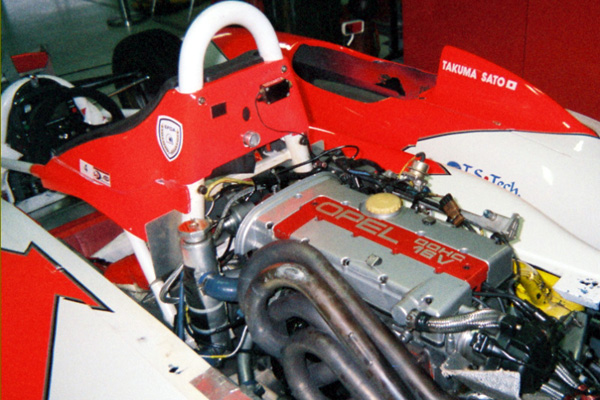
The C20XE was used by the Chevrolet WTCC (World Touring Car Championship) team and the Lada WTCC team. The engine was also an option in Westfield kitcars.
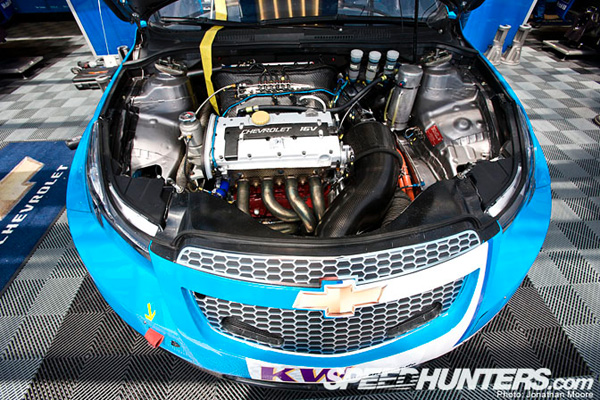
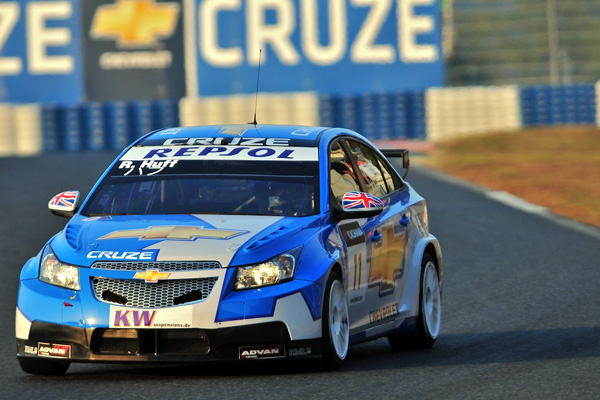
Chevrolet Cruze WTCC
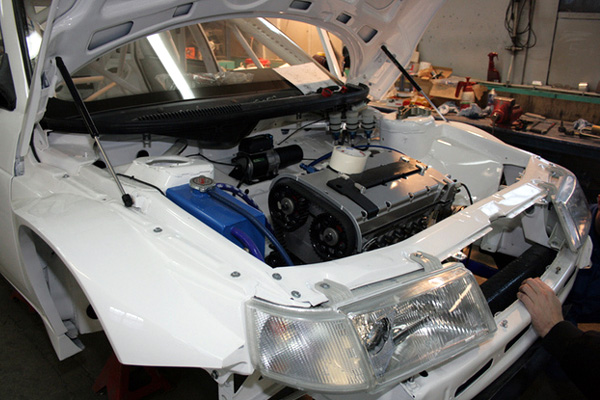
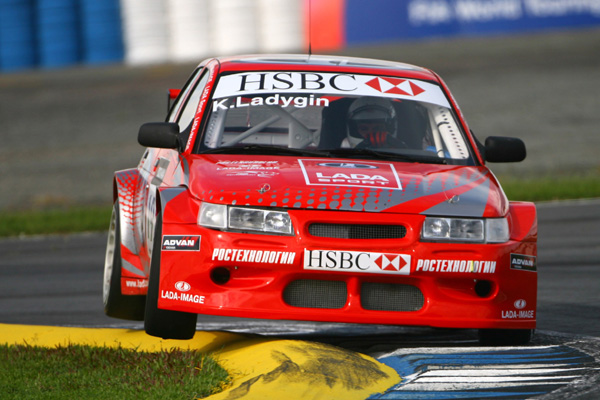
LADA 110 WTCC
Caterham SUPER7
ケーターハム・スーパー7に搭載されたエンジンは、キャブレター仕様160ps(VXストリート)、ウェバーアルファスポーツインジェクション仕様250ps(J.P.E:ジョナサン・パーマー・エボリューション)、F3用エンジンはVXレーシング(VXR)がある。
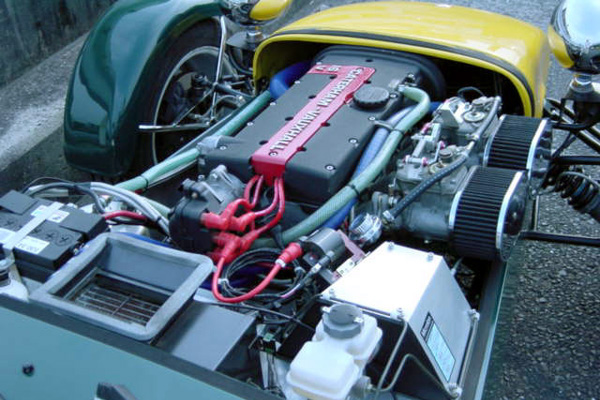
VXS
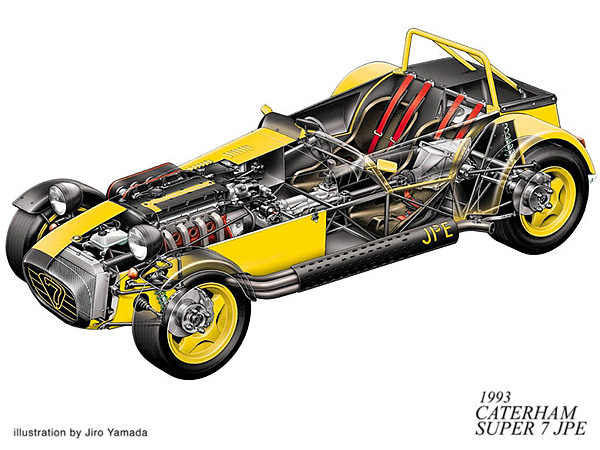
J.P.E.
2000-05: Zetec-E for FORD FOCUS WRC
1999年よりWRCに導入されたフォーカスのエンジンは、鋳鉄ブロックのコスワースYBTに変わって、アルミブロックのゼテックE(Zetec-E)をベースにイギリスのマウンチューン(Mountune)が開発を手がけた。実戦でパワー不足が指摘されたエンジンは、翌2000年から全面的にコスワースが担当するようになった。
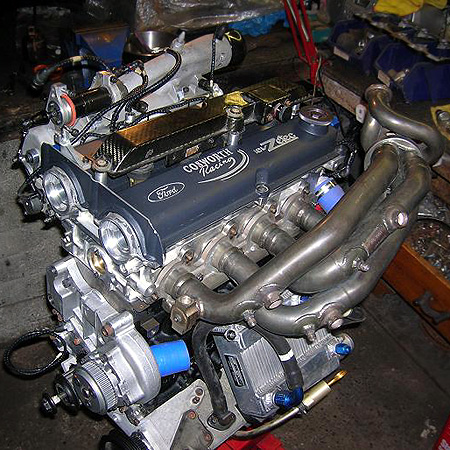
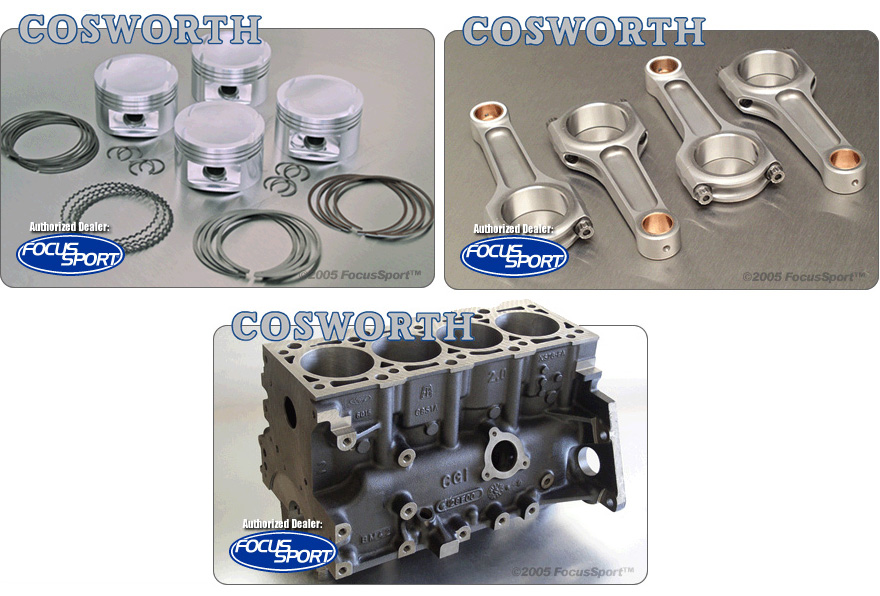
Cosworth Zetec Pistons
These are the same pistons ( 86mm, 8.8:1 ) that were used in the WRC Focus when the Zetec engine was being used and have been tested at over 500 HP.
Cosworth Zetec Connecting Rods
These "I" section forged steel connecting rods will fit the standard Zetec crank and are capable of handling over 400 lb ft of torque.
Cosworth WRC CGI Zetec engine blocks
The new sale price is only $799.95!
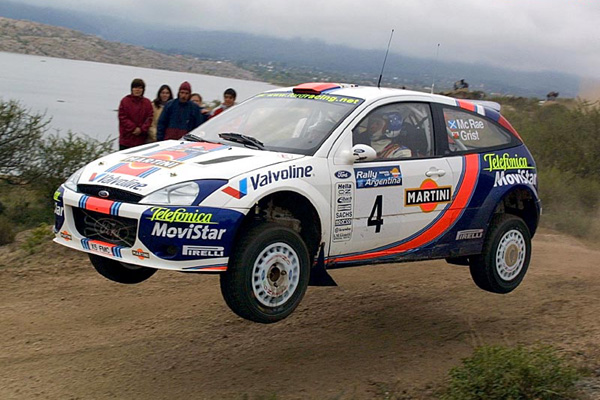
2001 Ford Focus RS WRC
2005年最終戦ラリー・オーストラリアから、2代目フォーカスをベースにした車両が投入された。エンジンは、マツダ開発のDURATEC(マツダではMZR)を基に、プジョーのワークスエンジンを担っていたフランスのピポ・モチュール(Pipo Moteur)が開発を担当。(コスワースの関与はない。ちなみにピポ・モチュール担当以降の2006年と2007年にはマニュファクチャラーズタイトルを獲得している。
2002: FORD FOCUS ST170(SVT)
2002年、台数限定モデルとして、2.0L DOHCターボの「RS」、2.0L DOHC自然吸気の「ST170 (or SVT)」が登場した。ゼテックエンジンの基礎開発にコスワースは関わっていたが、フォードのワークス活動がMスポーツの主導となると、彼らはエンジンチューニングにコスワース以外のチューナーを選んだ。しかし、限定モデルのSVTはコスワース製のヘッドでチューンされることになった。ターボの方には関与していないようである。(なお、フォードは、1998年から2004年までの間、コスワースのレース部門であるコスワースレーシングを子会社として所有していた)


LH: RS / RH: ST170(SVT)
Aftermarket parts for FORD Duratec Engine
The Duratec/MZR was designed as a replacement for the Zetec engine and was developed in joint collaboration with Ford and Mazda.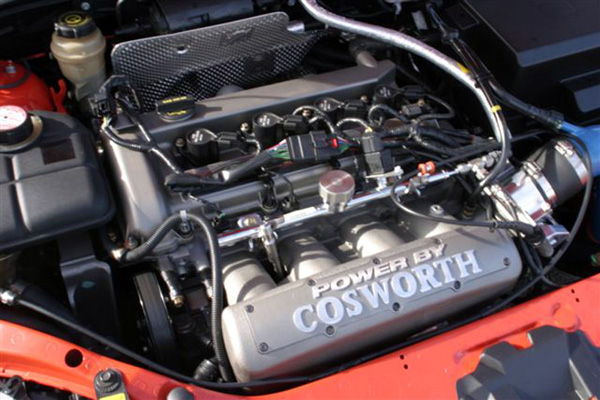
Duratec-R (Complete Modified Engine)
現在、コスワースはDuratecエンジン用アフターマーケットパーツ、およびそのパーツからなるコンプリートエンジンを提供している。

パーツの組み合わせにより6種の保証された仕様が存在する。
Bore x Stroke:
87.5mm x 83.0mm (2.0L)
87.5mm x 94.0mm (2.3L)
Power:
2.0 Litre: 205 bhp(CR 11:1) / 225 bhp(CR 12:1) / 255 bhp(CR 13:1)
2.3 Litre: 220 bhp(CR 9:1) / 250 bhp(CR 12:1) / 280 bhp(CR 13:1)
CATERHAM SUPER7
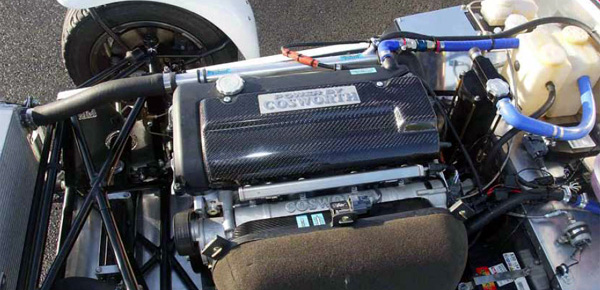
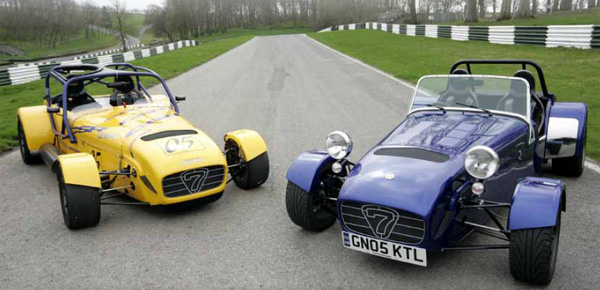
FORD Focus CTCC
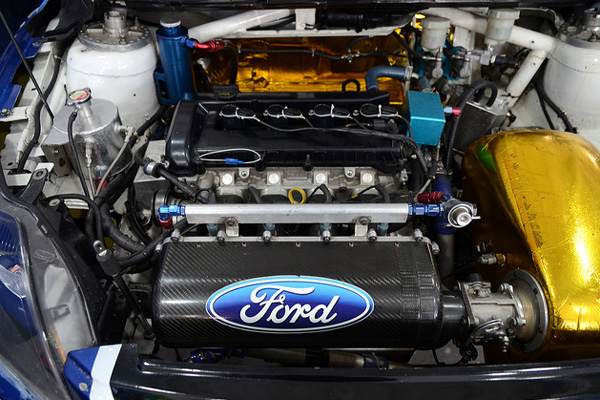
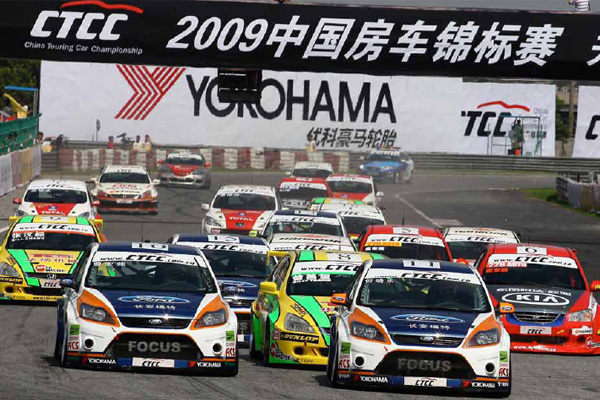
YDX - Formula Atlantic engines
Currently these are 300 horsepower (224 kW; 304 PS) 2,300 cc inline-four engines based on the Duratec / Mazda MZR engine.Changes includes a billet crankshaft, barrel throttle bodies, new cylinder head with larger valves, pistons, con rods and camshafts.
A detuned 250 horsepower (190 kW; 250 PS) version, targeting club racers, is sold to the consumer market. This engine retains the standard crankshaft, and has a different cylinder head.
Both engines are built by Cosworth in Torrance, California, under the guidance of newly appointed technical designer Wayne Merry (formerly of Cosworth in Worcester UK).
